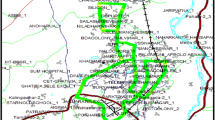Abstract
The future of mobile computing increases the urgent need for predictions of network bandwidth to guide the users’ operating habits. For instance it‘s assumed that servers, which are used for listening online music and watching video (streaming service) in our life, and the users of the network are immobile and will not change within a certain time. But the actual network is filled with regular changes. If we can predict the amount of network bandwidth, which users use in the next period of time, we can guide the users to transmittal and cache data in good transmission of the network status. At the same time, we do not transfer data in the bad network status or even when we can not receive the signal. It can improve the efficiency of network transmission in order to save the energy consumption of the data transmission. The real-time measuring network bandwidth value need upload files from client to server, and then to download files from the server to the client. We must get the uploading or downloading time. This approach generally takes a long time; therefore the test will not be able to proceed frequently in the limited time. In addition, the measurement of periodic real-time network bandwidth leads to the larger energy consumption in the mobile terminal. In this paper, we design an accurate and low cost forecasting method. First, we get a mapping relationship between human and environmental factors through large-scale data collection and analysis. Secondly, we use the method of trajectory match to predict the mobile network status in order to get the results which the users wish to get. At the end of the paper, we make our designed model simulation predictions and compare to the real measurement data to validate our predictive analysis.










Similar content being viewed by others
References
Hoonkavirta V, Perala T, Ali-Loytty S, Piche R (2009) A comparative survey of WLAN location fingerprinting methods. In: Proceedings of WPNC’09, pp 243–251
Cuervoy E, Balasubramanianz A, Cho D (2010) MAUI: making smartphones last longer with code offload. In: Proceedings of MobiSys’10, pp 49–62
Chun B, Ihm S, Maniatis P, Naik M, Patti A (2011) Clonecloud: elastic execution between mobile device and cloud. In: Proceedings of EuroSys’11, pp 301–314
Yang L, Cao JN, Yuan Y et al (2013) A framework for partitioning and execution of data stream applications in mobile cloud computing. ACM SigMetrics Perform Eval Rev 40(4):23–32
Giurgiu I, Riva O, Juric D, Krivulev I, Alonso G (2009) Calling the cloud: enabling mobile phones as interfaces to cloud applications. In: Proceedings of Middleware’09, pp 1–20
Zhang X, Kunjithapatham A, Jeong S et al (2009) Towards an elastic application model for augmenting the computing capabilities of mobile devices with cloud computing. Mobile Netw Appl 16(3):922–936
Satyanarayanan M, Bahl P, Caceres R, Davies N (2009) The case for VM-based cloudlets in mobile computing. IEEE Pervasive Comput 8(4):14–23
Kumar K, Lu Y (2010) Cloud computing for mobile users: can offloading computation save energy. IEEE Comput 43(4):51–56
Ra M, Sheth A, Mummert L, Pillai P, Wetherall D, Govindan R (2011) Odessa: enabling interactive perception applications on mobile devices. In: Proceedings of the MobiSys’11, pp 43–56
Kusy B, Lee HJ, Wicke M et al (2009) Predictive QoS routing to mobile sinks in wireless sensor networks. In: Proceedings of the IPSN’09, pp 109–120
Lee H, Wicke M, Kusy B et al (2010) Data stashing: energy-efficient information delivery to mobile sinks through trajectory prediction. In: Proceedings of IPSN’10, pp 23–28
Liu T, Bahl P, Chlamtac I (1998) Mobility modeling, location tracking, and trajectory prediction in wireless ATM networks. IEEE J Sel AREAS Commun 16(6):922–936
Song L, Kotz D, Jain R et al (2006) Evaluating next-cell predictors with extensive Wi-Fi mobility data. IEEE Trans Mob Comput 5(12):1633–1649
Shi C et al (2012) Computing in cirrus clouds: the challenge of intermittent connectivity. In: Proceedings of the MCC 2012. ACM press, Helsinki, Finland
Bomze IM, Budinich M, Pardalos PM et al (1999) The maximum clique problem. In: Handbook of combinatorial optimization, pp 1–74
Rana S, Jasola S, Kumar R (2013) A boundary restricted adaptive particle swarm optimization for data clustering. Int J Mach Learn Cyber 4(4):391–400
Hitendra Sarma T, Viswanath P, Eswara Reddy B (2013) A hybrid approach to speed-up the k-means clustering method. Int J Mach Learn Cyber 4(2):107–117
Liu Na, Chen Fei, Mingyu Lu (2013) Spectral co-clustering documents and words using fuzzy K-harmonic means. Int J Mach Learn Cyber 4(1):75–83
Xin Xu (2013) Enhancing gene expression clustering analysis using tangent transformation. Int J Mach Learn Cyber 4(1):31–40
Yeung Daniel, Wang Xizhao (2002) Improving performance of similarity-based clustering by feature weight learning. IEEE Trans Pattern Anal Mach Intell 24(4):556–561
Author information
Authors and Affiliations
Corresponding author
Rights and permissions
About this article
Cite this article
Han, D., Liang, H., Shen, X. et al. Subscriber dynamic characteristics-based wireless network accessing bandwidth prediction. Int. J. Mach. Learn. & Cyber. 5, 875–885 (2014). https://doi.org/10.1007/s13042-014-0229-1
Received:
Accepted:
Published:
Issue Date:
DOI: https://doi.org/10.1007/s13042-014-0229-1




